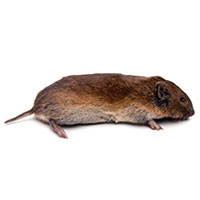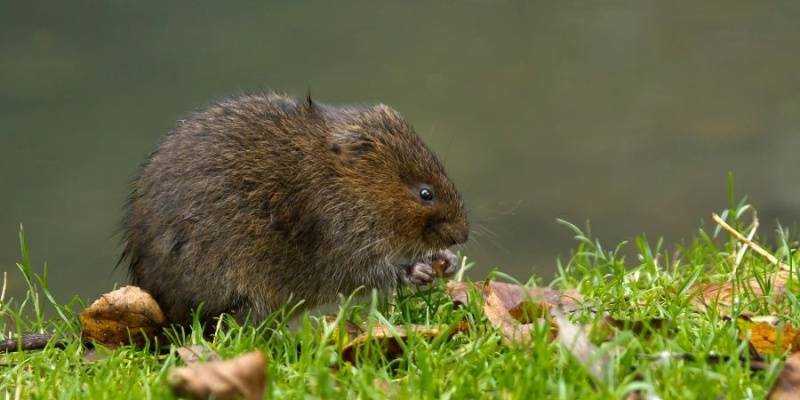Vole Bug Control Demystified: A Total Summary of Problem Discovery and Reliable Treatment Methods
As homeowner and yard fanatics, the breach of voles can be a persistent worry that needs a methodical technique for reliable monitoring. By comprehending the behavior patterns of these evasive rodents, one can acquire beneficial understandings right into their preferences and habits. From subtle indicators of invasion to the execution of targeted control procedures, navigating the realm of vole pest control requires a mix of knowledge and critical action. In this thorough introduction, we will discover the subtleties of vole invasion detection and explore the world of efficient therapy approaches that can protect your spaces from these below ground problems.
Comprehending Vole Behavior Patterns
Comprehending the intricate behavior patterns of voles is necessary for properly applying bug control measures in agricultural and domestic setups. Voles, little rats that resemble computer mice but with stouter bodies, are notorious for their rapid recreation prices and ravenous appetites for plants. By delving right into their habits patterns, parasite control experts can acquire valuable insights into vole choices, vulnerabilities, and practices.
Voles are mostly herbivores, feeding on a large range of plants, bulbs, origins, and tubers. They are likewise prolific tunnelers, creating fancy below ground burrow systems for nesting and foraging (vole lawn damage). By recognizing these practices, parasite control specialists can purposefully position traps and lure terminals along vole runways and access factors, raising the likelihood of effective elimination
In addition, expertise of vole habits patterns can help in developing safety nets to hinder future infestations. By dealing with elements that bring in voles, such as thick greenery cover and easily available food resources, property proprietors can make their premises much less inviting to these damaging pests. Finally, a comprehensive understanding of vole habits is vital in devising efficient and lasting pest control approaches.
Identifying Indicators of Vole Problem
Reliable vole bug control starts with promptly recognizing the dead giveaways of vole infestation on homes. Among the most common signs of vole visibility is the presence of surface paths. These paths are slim paths through lawn or greenery that voles create as they take a trip in between their burrows and food sources. Additionally, vole droppings are another clear indicator of invasion. Vole droppings are tiny, round pellets that are commonly discovered along their runways or near their burrows.
Along with droppings and runways, nibble marks on tree bark and plants are also signs of vole activity. Voles have a habit of gnawing on the bases of trees and bushes, which can cause damages and potentially kill the plants. Furthermore, the presence of burrow openings in the ground suggests an active vole population. Vole burrow entrances are generally tiny and discovered in mulched or verdant areas.
Being vigilant for these indicators can aid homeowner identify vole problems early and take proper insect control measures to stop more damage.
Applying Targeted Control Measures
What specific methods can be used to properly carry out targeted control actions for vole parasite monitoring on residential properties? Executing targeted control actions for vole insect monitoring needs a multi-faceted approach that integrates both avoidance and obliteration methods. Among the essential strategies is habitat modification, which involves getting rid of vole-friendly environments such as high turf, weeds, and particles near structures. Installing barriers like equipment cloth or gravel around garden beds and tree trunks can likewise aid prevent voles - vole yard damage.
Capturing is another reliable technique for controlling vole populaces. Live catches can be strategically put along vole runways or delve entries, baited with peanut butter or apple slices. When recorded, voles should be humanely eliminated to a various area to stop reinfestation.

Natural and Environment-friendly Remedies
The adoption of ecologically mindful methods can play a crucial role in managing vole populations without causing harm to the community. Environment-friendly and all-natural remedies supply a lasting approach to vole parasite control, decreasing using damaging chemicals and helpful hints promoting biodiversity in recommended you read the impacted areas.
One effective natural technique is using killer urine or predator decoys. Killers like foxes, owls, and snakes are the vole's natural enemies. By tactically putting predator urine or decoys around the plagued areas, voles may be discouraged from working out in those places.
Additionally, planting vole-resistant vegetation can assist in reducing vole damage. Plants such as daffodils, crown imperials, and Siberian squill are understood to be unappealing to voles and can function as all-natural repellents.
Furthermore, producing physical barriers like wire mesh or crushed rock around vulnerable plants can protect against voles from accessing them. These obstacles can assist secure yards and landscapes without posing any risk to the environment or various other non-target types. By incorporating these natural and eco-friendly remedies, vole invasions can be managed efficiently while maintaining ecological balance.
Long-Term Prevention Methods
To sustainably resolve vole invasions over time, implementing aggressive measures is vital for long-term prevention approaches. By minimizing thick plant life, compost, and clutter around buildings, you can make your residential property less attractive to voles. vole control.
Routine surveillance of vole task is essential for early discovery of any kind of signs of invasion. Establishing vole traps can aid in controlling their population before it comes to be a full-blown infestation. It is also crucial to seal off any access indicate structures or buildings to stop voles from getting.
Moreover, preserving a spick-and-span atmosphere can discourage voles from making your property their home. Eliminating food resources like dropped fruits, seeds, and family pet food can help in making your residential or commercial property less appealing to these insects. By incorporating these proactive actions with natural solutions and effective therapy techniques, you can establish a comprehensive long-term vole bug control strategy.

Conclusion
In verdict, understanding vole behavior patterns, identifying signs of infestation, executing targeted control measures, making use of all-natural and green solutions, and applying lasting avoidance methods are crucial steps in successfully handling vole invasions. By being positive and taking the needed actions to resolve vole problems quickly, individuals can efficiently manage and stop vole problems in their properties.
From subtle indicators of problem to the application of targeted control steps, navigating the world of vole bug control demands a blend of knowledge and strategic activity.Reliable vole insect control starts with promptly recognizing the warning indications of vole infestation on buildings. Implementing targeted control actions for vole bug monitoring needs a multi-faceted approach that integrates both prevention and obliteration techniques. Setting up vole catches can assist in managing their populace before it comes to be a full-blown problem. By integrating these positive measures with all-natural treatments and effective therapy techniques, you can develop Get More Information a thorough long-lasting vole insect control technique.
Comments on “Vole Troubles? Efficient Control Steps for Assurance”